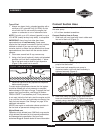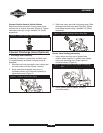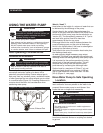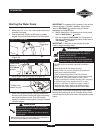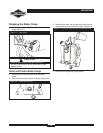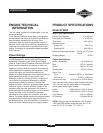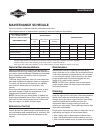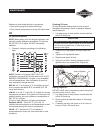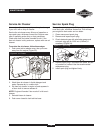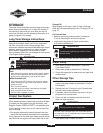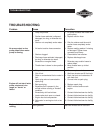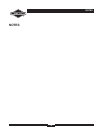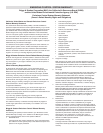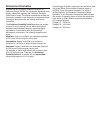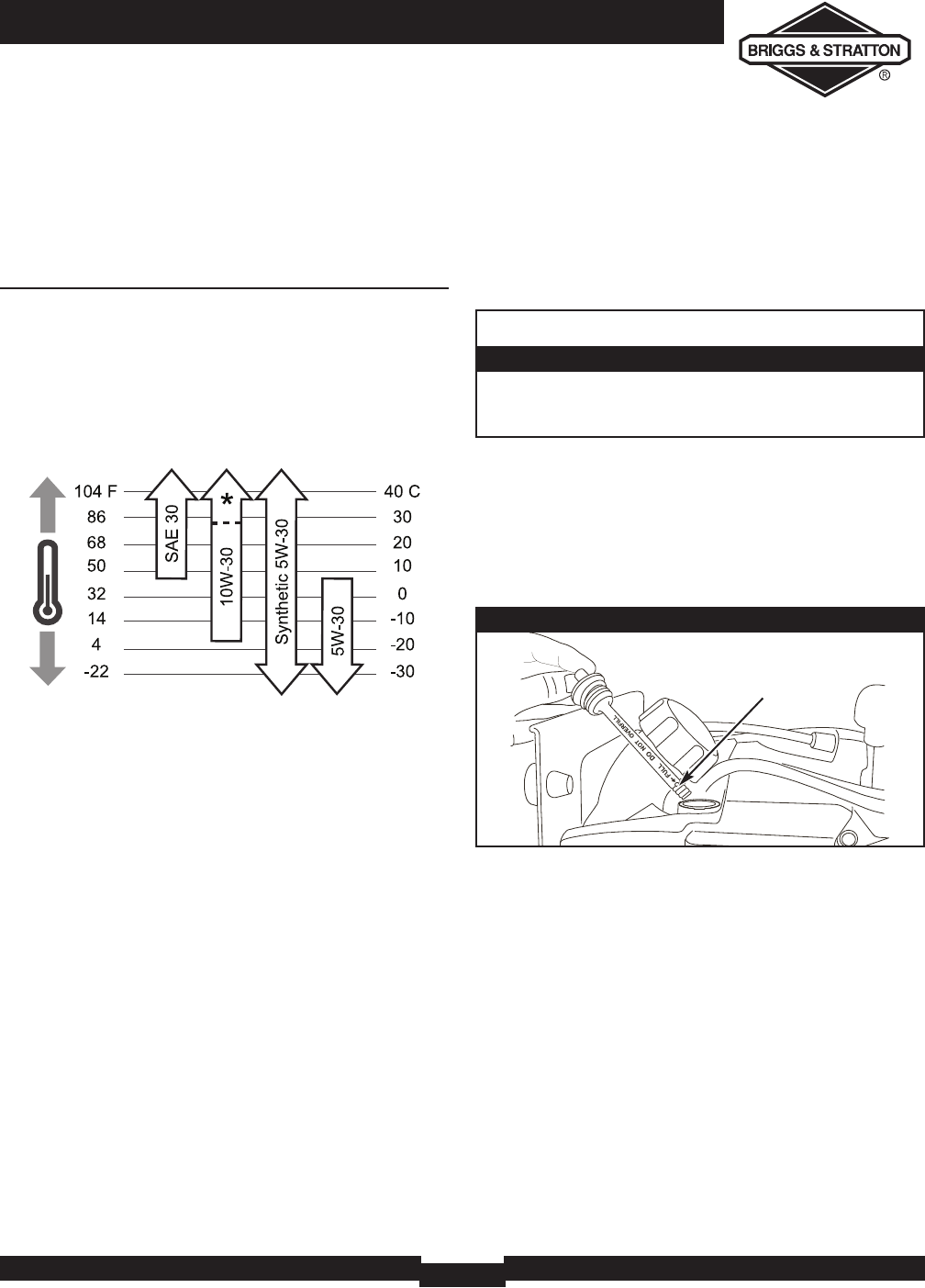
MAINTENANCE
15
Remove silt and sludge buildup in pump body:
• Open priming plug and remove drain plug.
• Flush internal components of pump with clean water.
Oil
Oil Recommendations
NOTE: When adding oil to the engine crankcase, use
only high quality detergent oil classified “For Service
SF, SG, SH, SJ” or higher. DO NOT use special
additives.
1. Choose a viscosity according to the following
table:
NOTE: Synthetic oil meeting ILSAC GF-2, API
certification mark and API service symbol with “SJ/CF
ENERGY CONSERVING” or higher, is an acceptable
oil at all temperatures. Use of synthetic oil does not
alter required oil change intervals.
SAE 30: 40 °F and higher (5 °C and higher) is good
for all purpose use above 40°F, use below 40°F will
cause hard starting.
10W-30: 0 to 100 °F (-18 to 38 °C) is better for varying
temperature conditions. This grade of oil improves cold
weather starting, but may increase oil consumption at
80°F (27°C) or higher.
*Check oil level frequently at higher temperatures.
Synthetic 5W-30: -20 to 120 °F (-30 to 40 °C)
provides the best protection at all temperatures as well
as improved starting with less oil consumption.
5W-30: 40 °F and below (5 °C and below) is
recommended for winter use, and works best in cold
conditions.
Checking Oil Level
Oil level should be checked prior to each use and
changed at least every 8 hours of operation. Keep oil
level maintained.
1. Lay water pump in level position on side with fuel
and oil fill facing up.
2. Remove oil fill cap/dipstick and wipe clean with
cloth.
3. Tighten oil fill cap/dipstick down.
4. Remove and check oil level.
5. Verify oil is at FULL level by presence of oil in
dipstick hole or by measure line (Figure 20).
Adding Engine Oil
DO NOT overfill. Use oil measuring cup for filling. Add
only half ounce of oil at a time.
1. Lay water pump in level position on side with fuel
and oil fill facing up.
2. Check oil level as described above in “Checking
Oil Level”.
3. If needed, add only half ounce of oil at a time to
bring it to FULL. Re-check level.
• If engine is not level, dipstick reading will not be accurate.
This will lead to possible over or under filling causing
damage to the engine.
Engine must be level, with oil fill facing up, to check oil.
CAUTION
Figure 20 — Oil Dipstick
Hole in Dipstick



